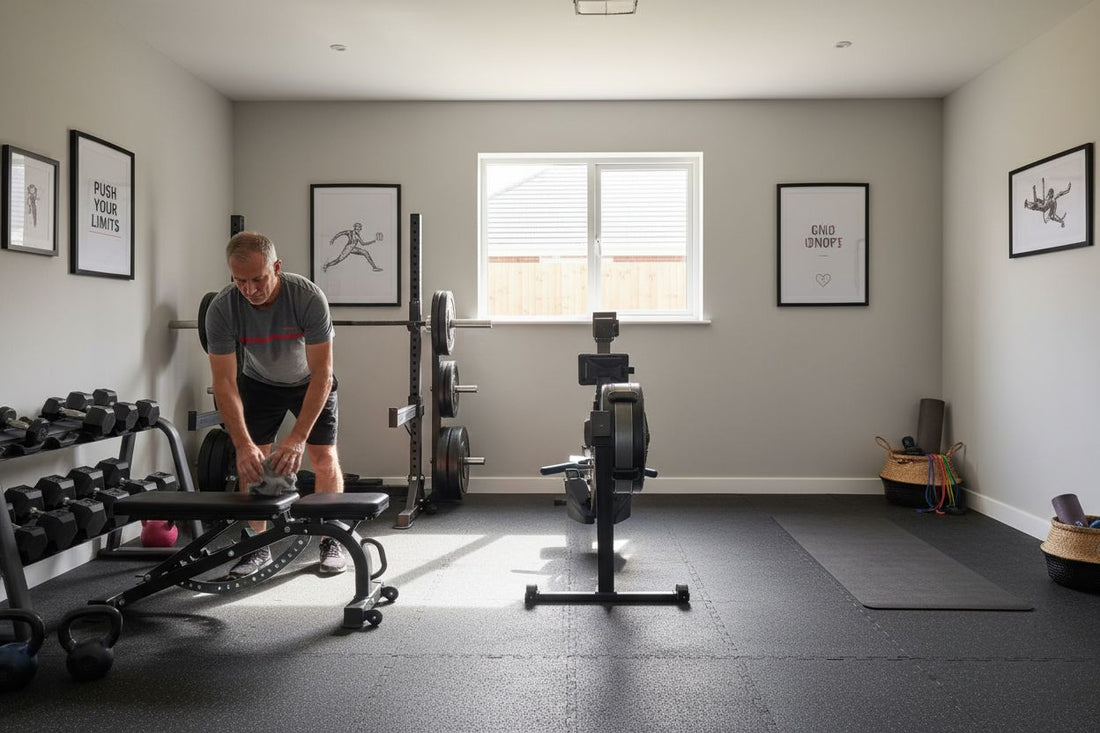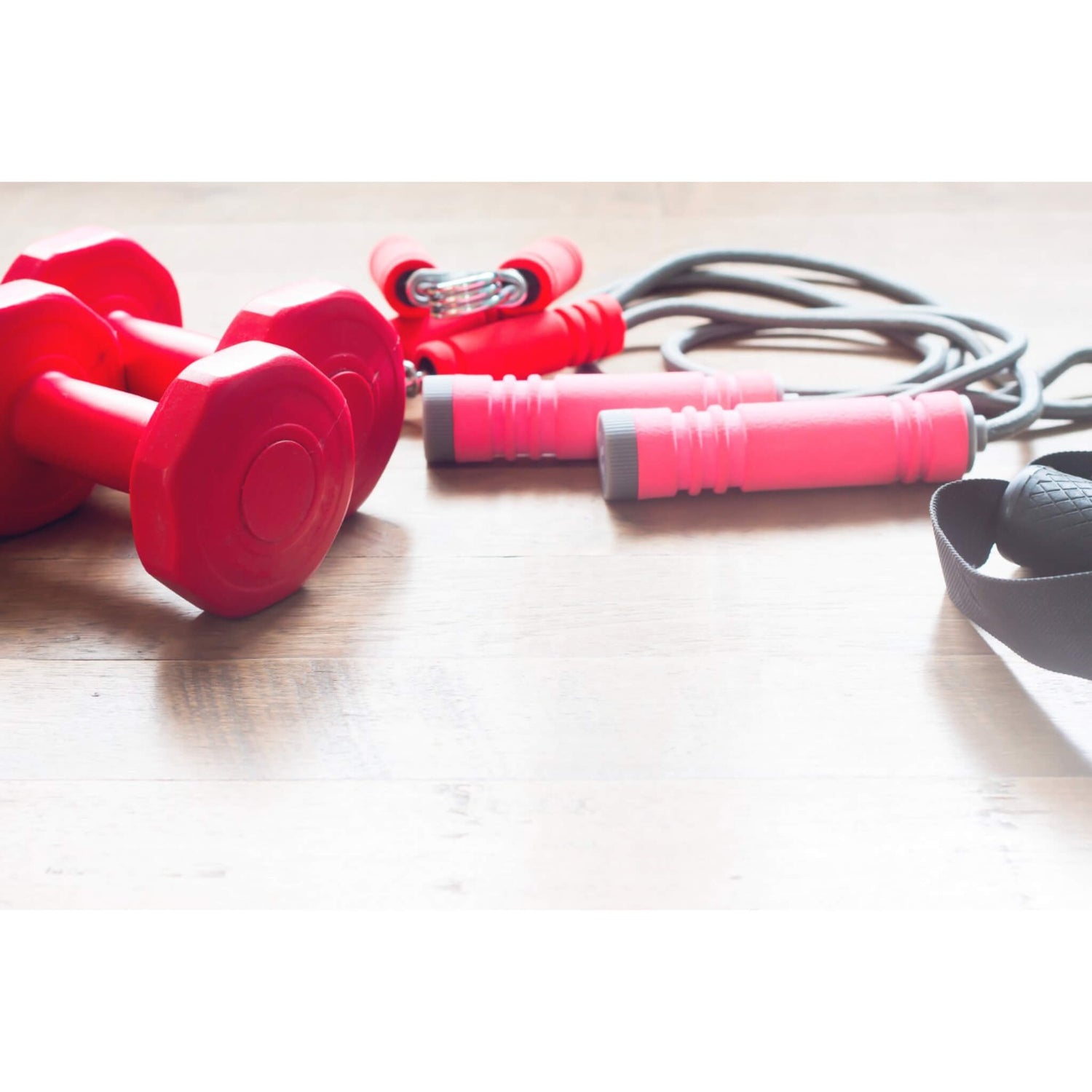Did you know that nearly 70 percent of UK homeowners now consider creating a gym at home to save time and gym fees? Turning an unused room or garage into your own workout haven can transform your daily routine and support lasting fitness goals. With clever planning and a few smart investments, you can build a space that motivates progress while fitting perfectly into your home and lifestyle.
Quick Summary
| Key Point | Explanation |
|---|---|
| 1. Measure Your Space Wisely | Accurately assess floor space, ceiling height, and ventilation to create a functional gym setup. |
| 2. Define Clear Fitness Goals | Establish specific fitness targets to guide equipment purchases and budget planning. |
| 3. Prioritize Quality Equipment | Invest in durable, versatile pieces to ensure long-term satisfaction and safety in workouts. |
| 4. Design an Organized Layout | Create designated zones in your gym to streamline workouts and enhance user experience. |
| 5. Conduct Safety Tests Thoroughly | Test equipment stability and functionality to ensure a safe and effective workout environment. |
Table of Contents
- Step 1: Assess Your Home Gym Space
- Step 2: Set Your Fitness Goals And Budget
- Step 3: Select And Purchase Essential Equipment
- Step 4: Design And Arrange Your Gym Layout
- Step 5: Test Your Setup For Safety And Function
Step 1: Assess Your Home Gym Space
Deciding to create a home gym is exciting. But before you start purchasing equipment, you need to understand your available space and how to transform it effectively.
First, walk around your potential gym area and take precise measurements. Most UK homeowners consider converting unused spaces like garages or spare rooms. According to research from HomeBuilding, converting a standard 16 m² garage into a functional workout space averages around £15,000 in total conversion costs.
When assessing your space, consider three critical elements: floor space, ceiling height, and ventilation. You will need sufficient room to move freely and perform exercises without feeling cramped. A good rule is to allocate at least 4 square metres for basic home gym setups and 10 square metres for more comprehensive training areas.
Pro Tip: Measure twice and plan carefully to avoid costly redesigns later.
Pay special attention to flooring. Hard concrete might seem sturdy, but you will want some form of shock absorption. According to HomeBuilding, adding a new concrete floor with a damp-proof membrane costs roughly £1,000. Consider investing in rubber gym mats or specialized flooring that can withstand workout equipment weight and reduce noise.
Structural preparation is crucial. As research suggests, many homeowners underestimate the complexity of converting a space for fitness use. Check your area’s planning regulations, especially if you live in a conservation area or have a listed property. Some spaces might require additional insulation or structural modifications.
The goal is creating a functional, comfortable workout environment that motivates you to stay consistent with your fitness journey. Your home gym should feel inviting and practical.
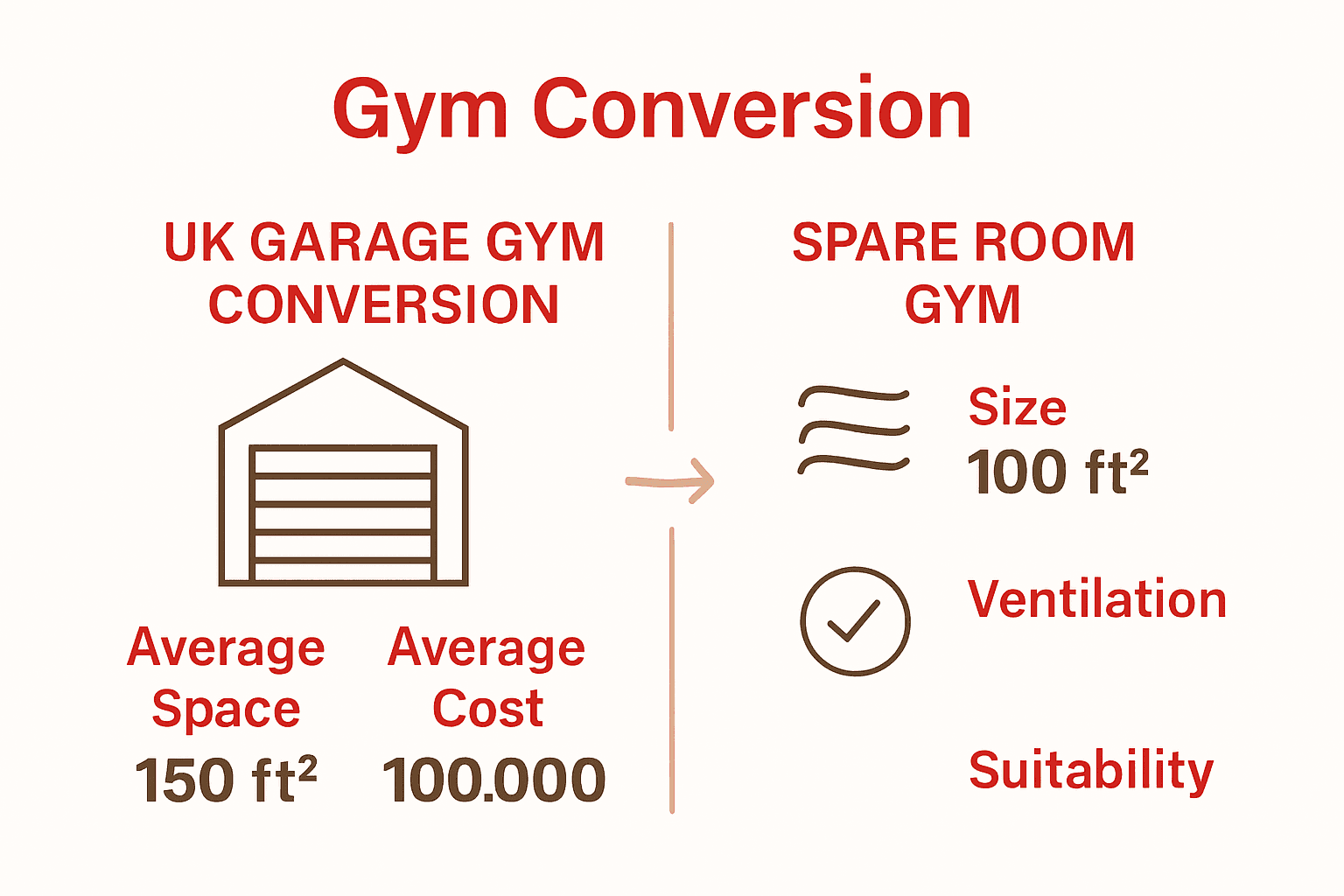
Here’s a comparison of space considerations when setting up a home gym:
| Element | Minimum Requirement | Why It’s Important |
|---|---|---|
| Floor Space | 4-10 m² depending on setup | Freedom to move safely |
| Ceiling Height | 2.2 m or more recommended | Accommodates all exercises |
| Ventilation | Window or mechanical system | Maintains comfort and air flow |
| Flooring | Shock-absorbing surface | Reduces noise & prevents injury |
| Structural Prep | Damp-proofing, insulation | Durability & compliance |
Ready for the next step? Let’s explore selecting the right equipment for your newly assessed space.
Step 2: Set Your Fitness Goals and Budget
Building a home gym starts with understanding exactly what you want to achieve. Your fitness goals will directly influence the equipment you purchase and the budget you need to allocate.
Start by getting crystal clear about your fitness objectives. Are you looking to build muscle strength? Improve cardiovascular health? Lose weight? Rehabilitation after an injury? Each goal requires a different approach and equipment selection. For instance, someone aiming to build muscle will need different gear compared to someone focusing on cardio training.
Break down your goals into specific and measurable targets. Instead of saying “I want to get fit,” consider precise objectives like “I want to increase my bench press by 20 kilos” or “I aim to run a 5k in under 30 minutes.” These concrete goals help you make smarter purchasing decisions.
Pro Tip: Your home gym budget should typically range between 10% to 25% of your annual fitness spending.
When considering your budget, think about long term investment. Cheaper equipment might save money initially but could cost more in replacements. Quality gym gear from reputable manufacturers often provides better durability and performance. Check out our Gym Gear collection for reliable workout equipment that offers great value.
Consider creating a tiered budget approach. Allocate funds into three categories: essential equipment, nice to have items, and future upgrades. This strategy prevents overspending while ensuring you have the core tools needed to start your fitness journey.
Remember that your budget is not just about equipment. Factor in potential additional costs like floor reinforcement, mirrors, sound systems or ventilation improvements. A comprehensive approach prevents surprise expenses down the line.
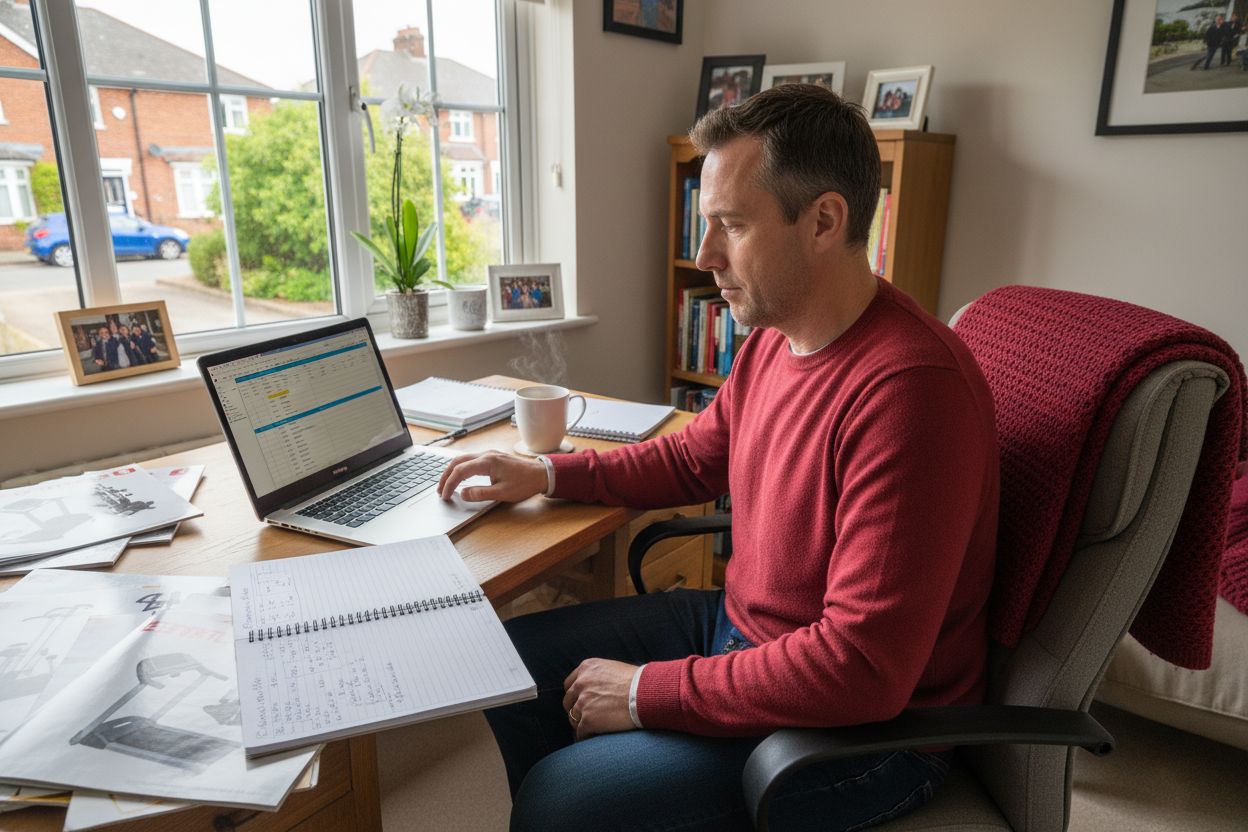
Ready to turn your fitness goals into reality? The next step involves selecting the right equipment that matches your specific objectives.
Step 3: Select and Purchase Essential Equipment
With your space assessed and goals defined, it is time to invest in equipment that will transform your fitness journey. The right tools can make a massive difference in achieving your workout objectives.
Start with fundamental pieces that offer versatility and maximum value. For most home gyms, this means investing in core equipment that supports multiple exercise types. A sturdy weight bench, adjustable dumbbells, resistance bands and a pull up bar form an excellent foundation for strength training. Read more about our comprehensive gym gear options to find the perfect starter set.
Consider your body weight and fitness level when selecting equipment. Beginners might start with lighter weights and simpler machines, while experienced athletes need more challenging gear. Quality matters more than quantity. One excellent multi functional piece can replace several single purpose items.
Pro Tip: Always test equipment in person when possible and check warranty conditions.
Balance your equipment selection across different fitness domains. Include tools for strength training, cardiovascular exercise and flexibility work. This ensures a well rounded fitness approach that prevents plateaus and keeps workouts interesting.
Prioritize equipment made from durable materials that can withstand frequent use. Stainless steel, high grade rubber and reinforced plastics offer longevity. Look for items with adjustable settings that can grow with your fitness progression.
Budget strategically by investing in core pieces first and gradually expanding your collection. Some equipment like adjustable dumbbells might seem expensive initially but save money long term by eliminating the need for multiple weight sets.
Ready to transform your fitness space? The next step involves setting up your newly purchased equipment for maximum effectiveness and safety.
Step 4: Design and Arrange Your Gym Layout
With your equipment purchased, it is time to transform your space into an efficient and motivating workout zone. A well designed gym layout can dramatically improve your training experience and help you stay consistent with fitness goals.
Start by creating designated zones within your gym area. Consider dividing your space into three primary sections: strength training zone, cardio area and flexibility or stretching corner. This approach helps organize your equipment logically and prevents cluttering. Explore our multi gym solutions that can help maximize your space efficiency.
Place larger equipment like weight benches and multi station machines against walls to create open floor space. Ensure you have sufficient room to move between stations without feeling cramped. A good rule of thumb is to leave at least 1 metre of clearance around each piece of equipment for safe movement and exercise execution.
Pro Tip: Position mirrors strategically to help monitor your form and create an illusion of more space.
Consider equipment weight distribution carefully. Place heavier items like power racks or weight stacks on more stable sections of your floor. If you have wooden flooring or raised platforms, reinforce these areas to prevent potential damage from repeated impact and heavy loads.
Factor in practical elements beyond just equipment placement. Think about ventilation airflow electrical outlet locations and potential noise considerations. You might want to install a small fan or portable air conditioning unit to keep the space comfortable during intense workouts.
Create a flow that matches your typical workout routine. Arrange equipment in a sequence that allows smooth transitions between different types of exercises. This psychological trick makes your workouts feel more intuitive and enjoyable.
Finally add personal touches that motivate you. A small sound system inspirational posters or a whiteboard to track progress can transform your gym from a mere room to a personal fitness sanctuary.
Ready to make your home gym functional and inspiring? The next step involves setting up safety measures and final preparations.
Step 5: Test Your Setup for Safety and Function
You have carefully planned and arranged your home gym. Now comes a critical step that many enthusiasts overlook: comprehensive safety and functionality testing. This process ensures your new workout space is not just visually appealing but genuinely safe and effective.
Begin with equipment stability checks. Physically test each machine and weight station by applying gradual pressure and checking for any wobbling or unexpected movement. Explore our robust multi gym options that are designed with stability in mind.
Carefully examine all connection points on weight machines resistance equipment and freestanding structures. Look for any signs of potential weakness like loose bolts unusual flex points or potential stress fractures. Tighten all connections and ensure each piece of equipment feels solid and secure under basic weight distribution.
Pro Tip: Always perform a 50% load test before attempting full weight capacity on any new equipment.
Check your floor reinforcement and load bearing capabilities. Different flooring materials handle weight differently. Wooden floors might require additional support platforms while concrete surfaces generally provide more stability. Consider using rubber gym mats to distribute weight evenly and protect your underlying surface.
Test the functional flow of your workout space by performing a series of mock exercise routines. Move between different stations simulate typical workout movements and identify any potential spatial constraints or awkward transitions. This walkthrough helps you identify and correct layout issues before they become problematic during actual training.
Evaluate electrical safety if you have powered equipment. Ensure all power outlets are correctly rated for the machines you are using. Check cable management to prevent tripping hazards and confirm that extension cords or power strips are not overloaded.
Finally conduct a comprehensive lighting and ventilation assessment. Proper illumination prevents accidents while good airflow keeps the space comfortable. Consider installing additional lighting or fans if your initial setup feels inadequate.
Ready to turn your home gym from a concept into a fully functional fitness sanctuary? The final step involves establishing your workout routine and maintaining your new space.
Turn Your Home Gym Dreams into Reality with the Right Gear
You have read how careful planning, the right measurements, and tailored equipment choices are crucial for building an effective home gym. Often, the biggest hurdle is finding high-quality gear that matches your space, your goals, and your ambitions. Many people delay their fitness journey because they struggle to choose reliable tools or feel overwhelmed by the sheer variety available. Without trusted equipment, your motivation to create a consistent workout routine at home can fade quickly.
Explore our comprehensive Gym Gear – Durable Cardio Equipment for Home & Gyms selection to discover the perfect match for your training style, whether you need a versatile weight bench, adjustable dumbbells, or robust cardio machines.
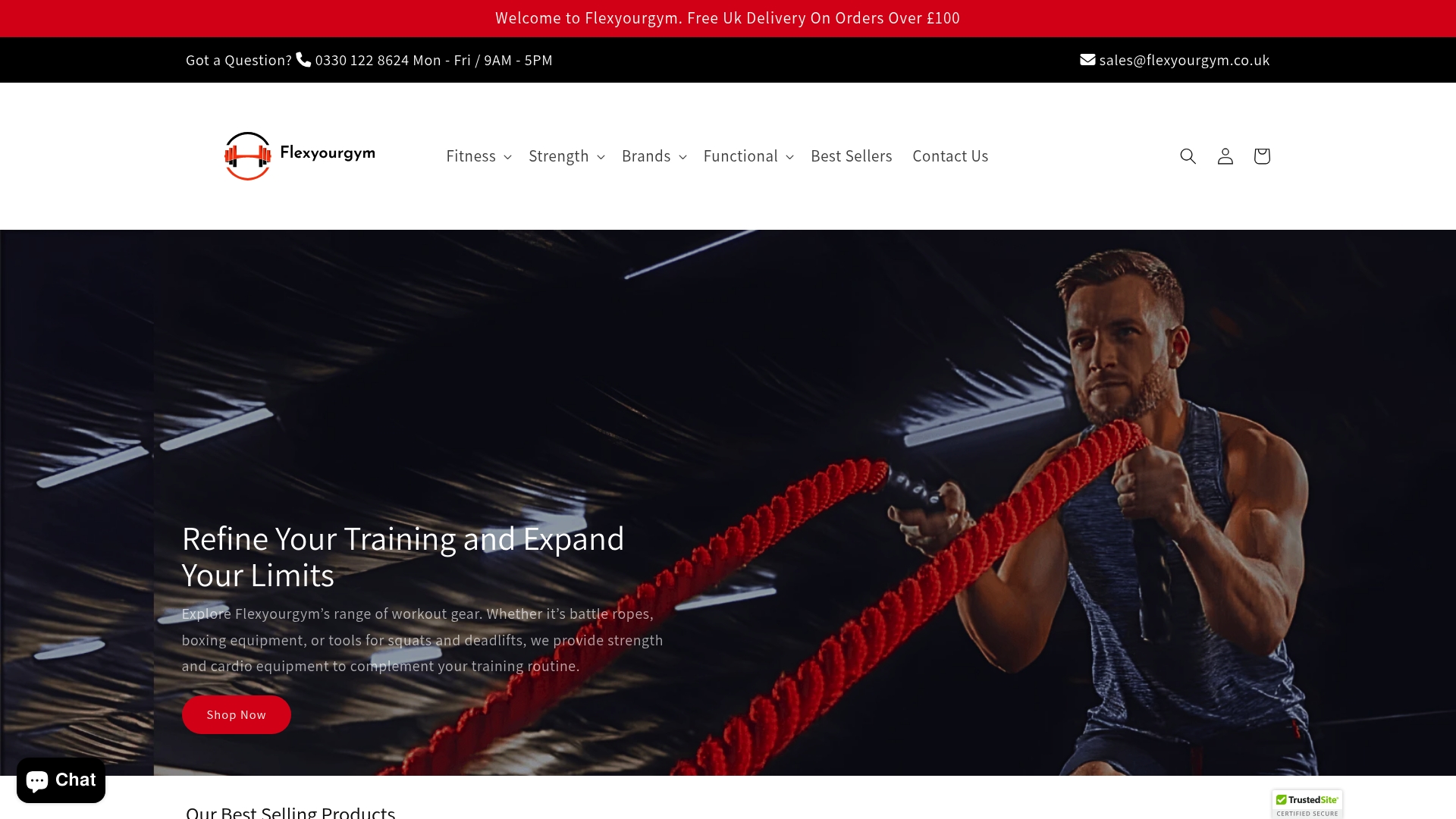
Take the next step towards building a home gym that inspires progress and lasts for years. Visit Flex Your Gym now and browse our collection designed for UK homes. For those looking to lift heavy, check out our UK-Made Olympic Lifting Platforms – Durable & Easy to Install and Power Racks UK – Smith Machines & Cable Stations for All Levels. Make your space truly your own and start seeing real results today.
Frequently Asked Questions
How do I assess my home gym space effectively?
Start by measuring your available area, considering elements like floor space, ceiling height, and ventilation. Allocate at least 4 to 10 square metres based on your planned gym setup to ensure adequate movement.
What fitness goals should I define for my home gym?
Determine specific targets related to your fitness journey, such as increasing your bench press by 20 kilos or running a 5k in under 30 minutes. Write down these goals to guide your equipment selections and workout routines.
What essential equipment should I purchase first for my home gym?
Begin with versatile items like a weight bench, adjustable dumbbells, resistance bands, and a pull-up bar. Prioritize quality over quantity, as investing in a few core pieces can replace less effective equipment.
How can I design an effective layout for my home gym?
Create designated zones for strength training, cardio, and flexibility to keep your space organized. Ensure to leave at least 1 metre of clearance around each piece of equipment for safe and easy movement during workouts.
What safety measures should I take in my home gym setup?
Perform stability and functional checks on each piece of equipment to ensure they are secure and stable. Conduct a load test by applying gradual pressure before using full weights to mitigate any risks.
How can I maintain my home gym over time?
Establish a regular cleaning schedule and routinely check equipment for wear and tear. Spend time assessing your space every few months to ensure it remains motivating and functional as your fitness needs evolve.
Recommended
- Unveiling The Power Of Free Weights And Muscle Growth
- Gym Gear – Durable Cardio Equipment for Home & Gyms
- Myo Strength Multi-Gym – All-in-One Fitness Solution for Home Gyms
- How to Build a Home Gym Without Breaking the Bank - STOMART.CO.UK
- How to build a hangboard at home DIY without machines - Gripnatic
